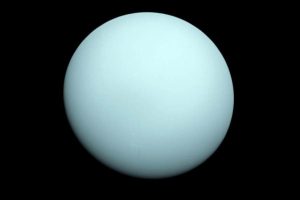The first organisms living on Earth were… bright pink

The first organisms living on Earth were… bright pink
Australian scientists have discovered in the geological record the oldest color produced by living organisms – bright pink. The pigment was found in rocks in the Sahara, which researchers have determined to be 1.1 billion years old.
Researchers from the Australian National University (ANU) at the cooWorking with colleagues at other institutions in Japan and the State ofoin the United have discovered the oldest color of biological life on the planet. Researchers extracted it from marine shaleoIn found in ancient rocks in the Sahara Desert in Mauritania.
Dr. Nur Gueneli of the ANU explained that pigments taken from marine black shaleoin West Africa are more than poł billion years older than other pigmentoin the ones found so far. Gueneli is the first author of the publication, whichora appeared in the pages of „Proceedings of the National Academy of Sciences".
– JasnoroThe gel pigments are molecular fossils of chlorophyll, whichore were produced by ancient photosynthetic organisms inhabiting the ancient ocean, whichorego long gone – Gueneli said.
Analysis of the compound indicates that they were left behind by cyanobacteria. After extracting the pigmentow researchers obtained a range of colors from blood red to dark purple in their concentrated form. After being diluted in water, scientists have seen the first color of biological life on Earth – brightnoroż.
– A careful analysis of ancient pigmentsow confirmed that small cyanobacteria dominated the base of the food chain in the oceans a billion years ago – Gueneli pointed out. As these microscopic organisms dominated the ancient oceans, they may have given them ro¿ow shade.
The fact that simple microbes seemed to rule the base of the food pyramid in the Precambrian world suggests that larger, more complex consumers did not evolve simply because there was no food. The first more complex organisms appeared around 600 millionow years ago – researchers claim.
– Cyanobacterial oceans began to disappear around 650 millionow years ago, when algae began to spread rapidly. Algae, though still microscopic, have a thousand times the volume of cyanobacteria, and are a much richer source ofofood dish – admitted ANU professor Jochen Brocks. – They provided the energy needed for the evolution of complex ecosystemsoIn, where large animals, including humans, were able to thrive – added.
But the latest discovery is more than a confirmation of ancient pigmentsow. The nature of the molecules mowi us something important about organisms thatore created them. Chlorophylls are chemical compounds that make theorym organism can generate energy from sunlight. It is green in color because it absorbs the red and blue parts of the sunlight spectrum, and reflects the green. But the pigment found may show that ancient organisms did not use chlorophyll but other compoundsoIn absorbing light.




